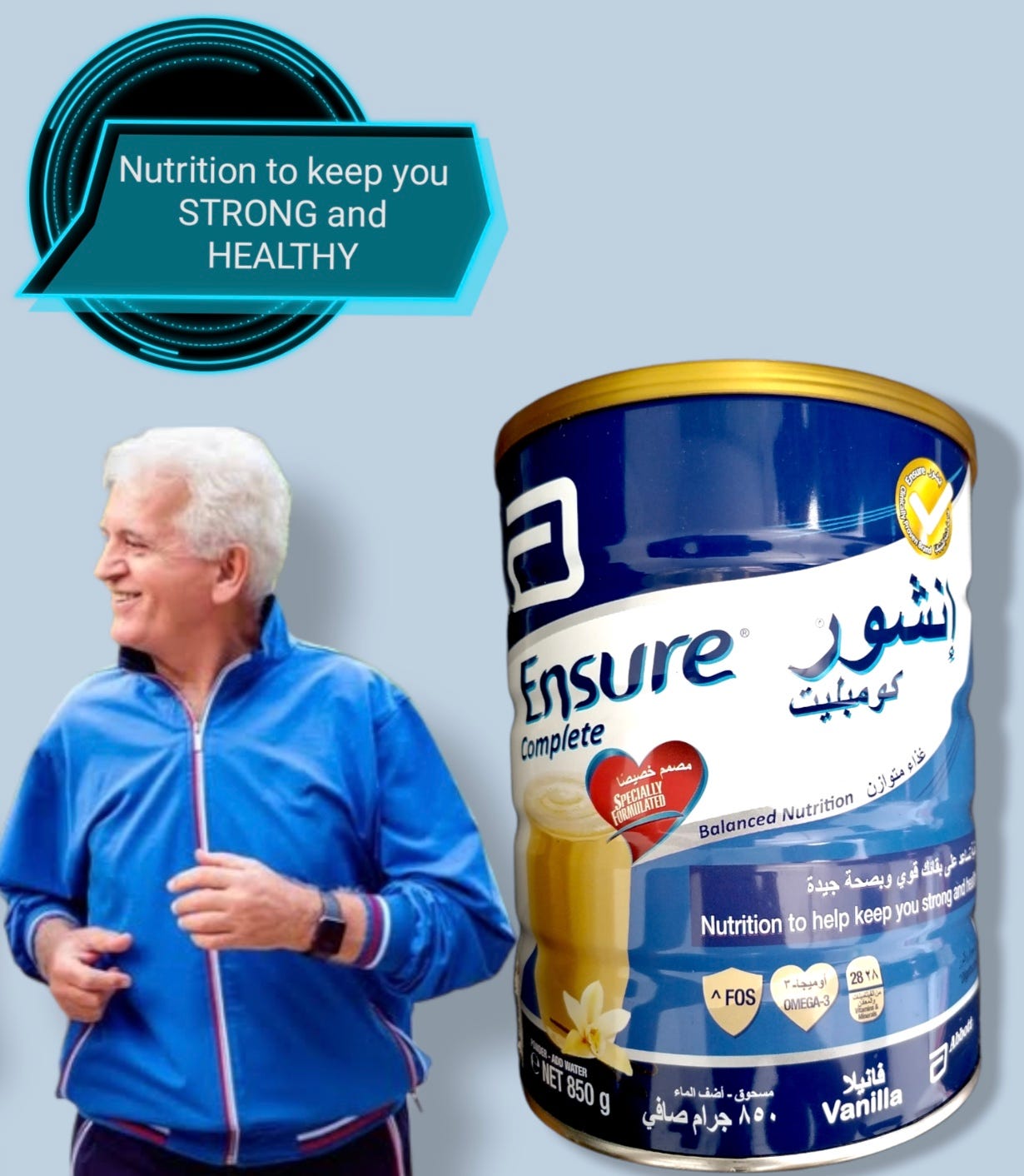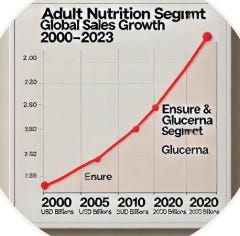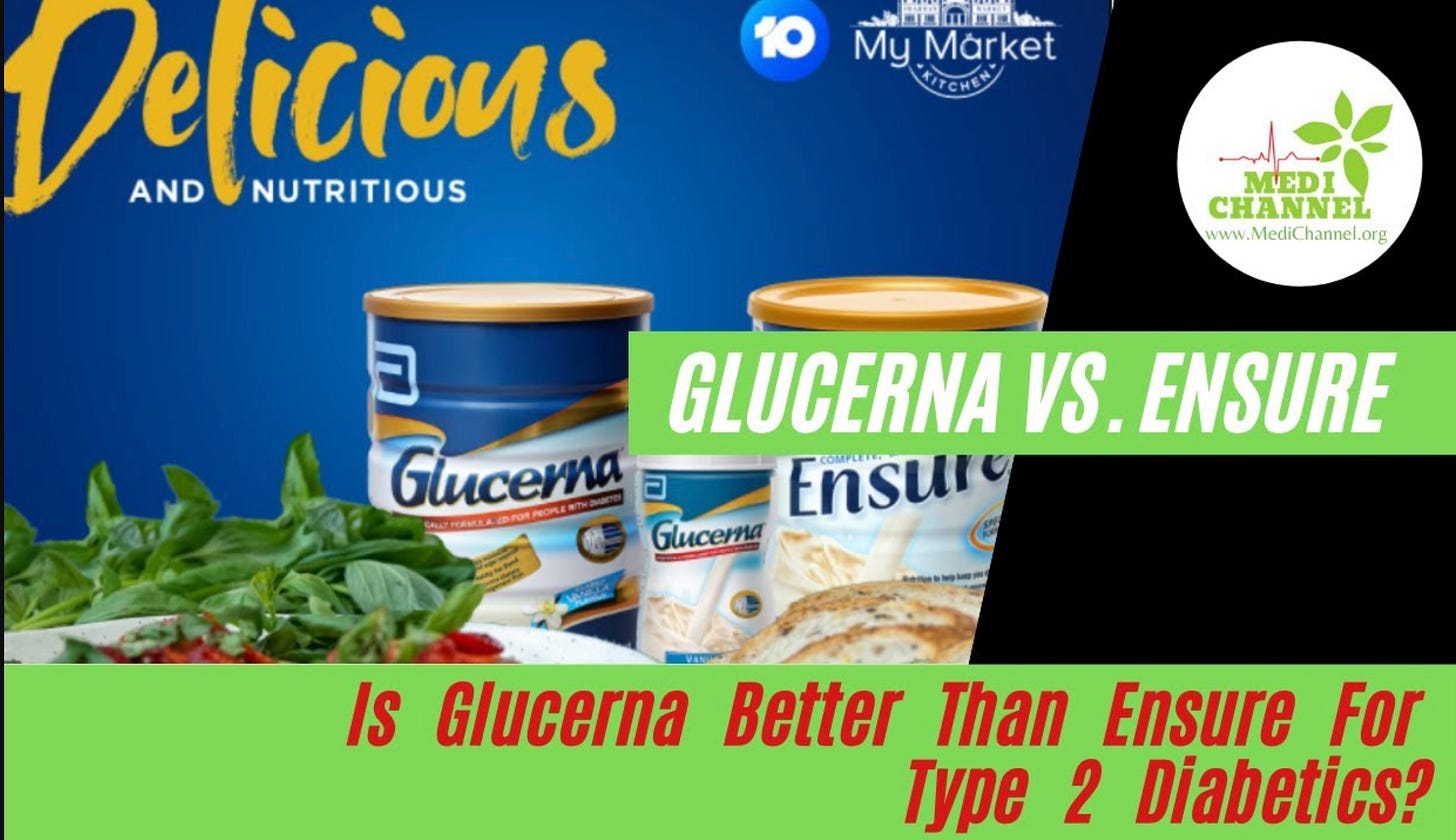Why Ensure Isn’t Ensuring Health (and What to Eat Instead)
When ‘doctor-recommended’ means sugar, seed oils, and marketing
LIVE ZOOM EVENT TOMORROW: Ozempic vs Old School: Can Natural Dieting Compete? on October 17 at 1 PM Eastern. Click here to watch the event.
Mr. Skeptical leans over and looks closely at the above image. “Is that Bill Clinton?”
I laugh. “I don’t think so, but it does resemble him.”
Subconscious Fat at 30,000 Feet
Walk through any hospital or senior-care hallway and you’ll see the same pastel-colored bottles lined up on trays: Ensure, Glucerna, Boost — the “nutritional” shakes prescribed to help older adults keep their strength.
Doctors hand them out like magic fuel. Families feel reassured: “Mom’s getting her nutrients.”
But what if the modern “nutrition shake” is really a candy bar with a PhD?
Mr. Skeptical slams his sugared coffee mug on the table. “Come on. The label says ‘complete and balanced nutrition.’ You saying the doctors and dietitians are all wrong?”
I calmly sip from my buttered coffee mug. “Not wrong — just outdated. These drinks were designed decades ago for calorie emergencies, not long-term nourishment. They keep people alive, not thriving.”
Subconscious Fat at 10,000 Feet
Let’s zoom in on the label.
A typical Ensure Original bottle (8 oz) contains:
220 calories
9 g protein
6 g fat
34 g carbohydrates
— of which 15 g are added sugar
That’s more sugar than a glazed donut.
Glucerna, marketed for diabetics, swaps some of the sucrose for maltitol and fructose polymers — slower-burning carbs that sound better but still spike insulin.
Then add canola oil, corn maltodextrin, artificial flavors, and synthetic vitamins sprayed in at the end. It’s “nutrition” by chemistry, not biology.
Clinical research backs this up: A 2020 Journal of Clinical Nutrition review found that while such formulas can prevent weight loss in frail elders, they often raise blood glucose and increase triglycerides — markers of metabolic stress.
Mr. Skeptical interrupts, “But at least they’re getting calories and protein, right? Isn’t that the point?”
“Calories aren’t nutrition. A malnourished cell doesn’t care about your calorie count; it cares about amino acids, fatty acids, and micronutrients delivered in the forms evolution recognizes.”
Subconscious Fat at Eye Level
Here’s the paradox: the very group these shakes target — older adults — are the ones least able to handle the sugar load. Aging bodies have lower insulin sensitivity, slower digestion, and reduced muscle synthesis.
Feed that system 30 grams of liquid carbs and you get blood-sugar spikes, followed by crashes that kill appetite and mood. Over time, that can worsen frailty, not fix it.
Contrast that with a protein- and fat-dominant diet:
Steak or eggs provide complete amino acids.
Animal fats offer cholesterol for hormones and cell membranes.
Minerals and B-vitamins come packaged in bioavailable form.
In other words, the real “nutrition shake” is a well-seared ribeye blended with instinct.
Mr. Skeptical glares at me, “So you’re suggesting Grandma swap her vanilla Ensure for a T-bone smoothie? That’ll go over great at the nursing home.”
“Hey, humor aside, even simple upgrades matter: scrambled eggs in butter, bone broth with collagen and salt, ground beef patties — foods that require chewing, digesting, and signaling.”
“Because chewing tells the brain you’re eating. Protein triggers muscle repair. Fat tells hormones you’re safe. Shakes skip those signals entirely.
“I’d add these shakes into the category of ‘filler foods.’ Like all carbs, including fruits and vegetables, they are ‘filler foods.’
I used my hands to signal the quotes on filler foods, while Mr. Skeptical puckered his lips and looked away, annoyed.
Practical Suggestions and Conclusions
Read the label like a detective.
If sugar or corn maltodextrin is one of the first ingredients, it’s not nourishment — it’s sedation.Use shakes only as a bridge, not a base.
In hospitals or during recovery, fine. But as daily nutrition for aging adults? They do more metabolic harm than good.Think animal-based simplicity. (Simple Is King)
Eggs, meat, fish, butter, liver, salt. These foods supply all nine essential amino acids and the fat-soluble vitamins (A, D, E, K) that most shakes pretend to have.Mind the mind.
The reason these drinks persist isn’t science — it’s belief. People equate convenience with care. “If it comes in a medical-looking bottle, it must be good.”
Changing that belief may be the most therapeutic step of all.For the diabetic or pre-diabetic:
Skip Glucerna’s marketing. Instead, prioritize satiety: animal protein + natural fat. That combo steadies glucose far better than any “slow-release carb blend.”Look at Raw Milk: If the priority is steady glucose, satiety, and actual building blocks, milk/yogurt/kefir beat sweetened “medical” shakes for everyday nourishment, and raw milk can be excellent for some healthy adults with access to trusted farms.
Mr. Skeptical adds, “So the next time a doctor hands me a bottle of Ensure, I should hand him a steak?”
“Exactly. Tell him you’re upgrading to a formula backed by three million years of clinical trials — human evolution.”
Be aware.
Other links related to this post:
Raw Milk: Is it safe?
Evolution: It Seeps Into Everything
Convenient Beliefs PS Links on LinkedIn, Facebook, Instagram, X, and Notes. Full disclosure: ChatGPT was used to research and enhance this post.
PSS LIVE ZOOM EVENT: Ozempic vs Old School: Can Natural Dieting Compete? on October 17 at 1 PM Eastern. Click here to watch the event.




